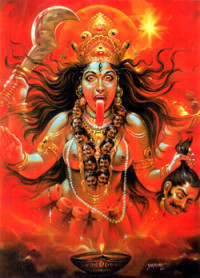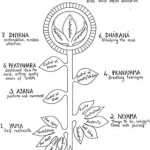by guest author Pip Bennett
I’ve had some dark, dark clouds following me around these past couple of weeks.
One day at a work lunch I found myself judging everyone for how happy they were.
I was thinking, they are only happy because they have such-and-such. If I had those things, I would be happy. They don’t understand what it is like to not have choice, be in a difficult situation.
Oh dear. I’ve listened to enough Buddhist teachings to know that these thoughts are not true. Things aren’t going to make me happy.
So what is going on?
I feel stuck; like I have no control over my life and that I cannot change things. I’m not going to make this a list of my woes. But one thing that I have found hard dealing with is the amount of violence against women that is around me. Where I live, there are two violent couples and it is not unusual to hear a woman crying and her male partner screaming abuse at her.
I’ve also been carrying a lot of guilt about not making more yoga classes.
I know that the practice of Ashtanga is supposed to be six times a week but I’m only making it to two or three a week.
I’ve read different accounts on how quickly one should be doing the practice this often – one suggested starting at two or three days per week and adding a day every six months, taking a couple of years to reach the six days a week practice. Another set of advice said that start five or six days a week straight away, even as a beginner.
The thing I appreciate most about Ashtanga is it helps you to be in the dark spaces. The sequence demands your absolute commitment to stay with it, even when it is difficult and you hate it.
I have heard of people spending weeks, months, years, working on a posture that they have difficulty with. Even in a single practice, in a single posture, maybe your thighs burn and you just want out. But the idea is to find comfort in that uncomfortable place, to be able to stay with it.
Ashtanga isn’t what brings all the negativity to me. The negativity is already there. This practice is like wiping a mirror clean – being able to see that things are foggy and unclear and slowly making progress through the issues that are there as you cleanse yourself of all your beliefs that don’t serve you, and eventually practicing to accept things as they are, flaws and all.
At least, that’s how I imagine it will be. I’m still only just beginning the cleansing phase.
I have a feeling that there is a lot of ego and pain. I don’t know what exactly though.
I work in aid and development and there have been plenty of colleagues working in the sector that have said that we are prone to be not only givers and workaholics, but also to carry a lot of pain.
We try to help others and I guess it could be almost as a way of running away from our own pain, or trying to heal ourselves by healing others. But the fact is that while we can help and share tools, we cannot solve the problems of other people – they have to do it themselves. We need to work on ourselves.
Pema Chodron says;
“Compassion is not a relationship between the healer and the wounded. It’s a relationship between equals. Only when we know our own darkness well can we be present with the darkness of others. Compassion becomes real when we recognize our shared humanity.”
I’ll have to dive a lot deeper to uncover what is hidden inside of me, causing my pain.
On a positive note, my Ashtanga classes are getting better. I’m slowly picking up the order of the series, my chaturangas are getting easier, and I am getting more confident with the practice and getting to know the community better.
Although I haven’t done another Mysore class – I have been avoiding because it seems scary to go and not know the whole sequence – I did do a practice alone when the teacher couldn’t make it.
I loved it. It was just me, with my breath, and my body. It felt amazing, although I did get a bit lost near the end of the sequence with the asanas that I cannot do or haven’t come across in a class yet. I flowed with my breath. When I lost it, I gently reminded myself to come back.
A couple of days ago, I went to a class led by a woman I’ve never had before. To be honest, I didn’t like it. She was fast and stricter – almost military – about the format. It was about power and strength, which I don’t like being told to use. I find it exhausting.
After having done a practice by myself, I can see the difference and the benefits of the Mysore and home practice. It cultivates self-belief and self-trust. Plus, you just get to play with your own practice of the asana.
I can feel a heavy darkness in me when I’m at work or in some classes, contrasted with finding lightness when I am able to just be in the moment, accepting and releasing and taking things as they are.
I need to just be in that dark space, without defining myself by it. It is what it is, just accept it.
To quote Pema Chodron again because I love her so much:
“Rather than letting our negativity get the better of us, we could acknowledge that right now we feel like a piece of shit and not be squeamish about taking a good look. That’s the compassionate thing to do. That’s the brave thing to do.”
So here I am, just continuing with my practice, taking a good look.
About Pip:
 Pip Bennett is a consultant currently based in Costa Rica. Her background is in youth participation and women’s rights and she is also passionate about yoga, connection and stories.
Pip Bennett is a consultant currently based in Costa Rica. Her background is in youth participation and women’s rights and she is also passionate about yoga, connection and stories.
She has just started to develop her own venture called cookingwithpip.com, which aims to support and link together fellow community development workers, bringing them together to celebrate themselves, each other, and innovative ways of working.



All the best to you with your ashtanga practice – staying with darkness, discomfort, and struggles with flow and grace is one of the great gifts of yoga practice for me, and I’m definitely inspired to start exploring ashtanga as part of my practice now. I’ve encountered some systems and teachings that have helped me come to terms with and support my journey of letting go of my ego – if you haven’t encountered them before, let me recommend checking out: Sandra Maitri’s enneagram books, Almaas’ Diamond Approach, and Gurdjieff. A lot of their stuff resonated with me. I love the Pema Chodron quote! You’re awesome, thanks for sharing your journey!
Thank you Alison for the support and the suggested resources – I will have a look for them. I do recommend that you give Ashtanga a try! Have a go at doing the Primary Series sequence (with a google search you can find some good documents that show the series in picture form, or you can search for Maehle Gregor’s book on the Primary Series). There’s something about commiting to a whole set sequence, with the breathing and the drishti that I have found is challenging and comforting at the same time.